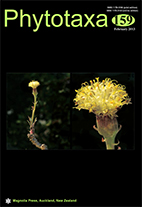Abstract
Among the more than 170 species of Euphorbia (Euphorbiaceae, Malpighiales) that occur in Madagascar, some remain poorly known and dramatically under-collected, and are based on vague and incomplete descriptions. As part of an ongoing study of the genus in Madagascar, a revision is presented of E. section Pachysanthae, which comprises six species endemic to this island that show clear morphological affinities to one another. Expanded descriptions are provided for the four species already named, and the two others are described as new (Euphorbia haevermansii and Euphorbia nusbaumeri), both from the Daraina region in north-eastern Madagascar. An identification key is provided to the species, which are characterized by having developed leaves, unarmed twigs (unlike most of Malagasy Euphorbia), leafy deciduous cyathophylls, and ecarunculate seeds. Members of the section differ from one another in their geographical distribution, habit, and the shape and the size of their leaves, glands, cyathia and cyathophylls, as well as the size, surface and number of locules of the fruits. The morphological affinities of these six species are discussed and preliminary conservation assessments are provided.

